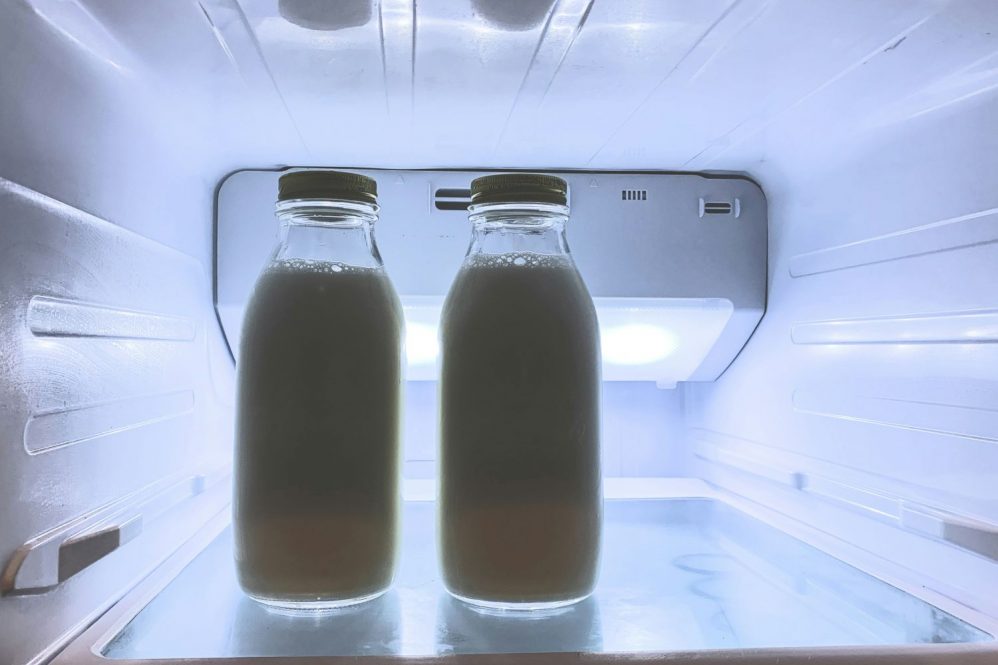This new technology can detect eight different pathogenic and spoilage bacteria in milk in just two hours with more than 98% accuracy

Debby Hudson on Unsplash
Dairy and meat are two common sources of foodborne illness in the U.S.
Because of this, producers use methods to test food for bacterial contamination before making it available to the public. However, these methods are time-consuming, expensive, and require expert training to perform.
Researchers in UConn's College of Agriculture, Health and Natural Resources have developed new methods powered by machine learning to test for bacterial contamination and spoilage that radically reduce the cost and time required to perform them.
This work is led by Yangchao Luo's group, and Zhenlei Xiao. Luo and Xiao are both faculty members in the Department of Nutritional Sciences.
Their method works by using a 96-well plate - a plate with many small areas to fill with samples - and an array of 12 sensors.
The sensors react differently with different bacteria based on their molecular structure. These interactions produce unique patterns. By feeding these patterns into a machine learning algorithm, the researchers taught a computer to detect the pathogens based on the patterns.
This new technology can detect eight different pathogenic and spoilage bacteria in milk in just two hours with more than 98% accuracy.
"We hope to develop a technology that can detect simultaneously as many species as possible so that we can easily trace back the original source of contamination," Luo says.
The group tested five pathogenic bacteria including Listeria, E. coli, and Salmonella, which are three of the most common foodborne pathogens in the U.S. They also tested three non-pathogenic bacteria that cause spoilage. They published these findings in Food Chemistry.
"With this combination, we are pretty sure that we covered most cases of milk contamination," Luo says.
This approach is a major improvement over existing methods which can only test for one kind of bacteria at a time, and the whole process takes days and requires trained laboratory technicians.
The researchers used cutting-edge nanotechnologies with high sensitivity and machine learning to achieve these results.
Because performing this test does not require any formal laboratory training, the researchers hope to eventually develop an at-home test using an app that consumers can use to check their milk for pathogens or spoilage.
Luo's group is currently developing an app that enables a smartphone to read the fluorescence data the sensors produce.
The team is also working to make this process even simpler by eliminating the purification step that removes proteins from the milk sample that would interfere with the accuracy of the test.
The research team is also developing a sensor to detect volatile organic compounds (VOCs), which are produced by bacteria that cause spoilage in meat.
These sensors can detect VOCs to determine food's freshness, specifically beef, and determine the presence of pathogenic bacteria.
"Based on the VOCs we can detect a pattern that can translate into which type of bacteria these VOCs are coming from," Luo says.
This research was published in Food Frontiers.
The technology works similarly to the bacterial sensors. When VOCs are released from meat, it produces a color change in the sensor that gives researchers information about what VOCs are being produced and by which bacteria. The group again developed machine learning models to read the data.
The advantage of testing for VOCs rather than bacteria in raw meat is that with VOCs, the sensors do not need to be in direct contact with the bacteria, so you don't need to take a sample out of the product to test it. While taking a sample from a batch of milk is relatively simple, taking it out of a cut of meat is less so.
This technology could be incorporated directly into food packaging to create an easily readable measure of potential food spoilage or contamination based on color changes in the sensor.
"VOCs are volatile - they're just in the air," Luo says. "So, you can detect VOCs without touching bacteria. It doesn't require a sampling process that way. So, we can put a simple sensor on the packaging."
This work relates to CAHNR's Strategic Vision area focused on Enhancing Health and Well-Being Locally, Nationally, and Globally.






